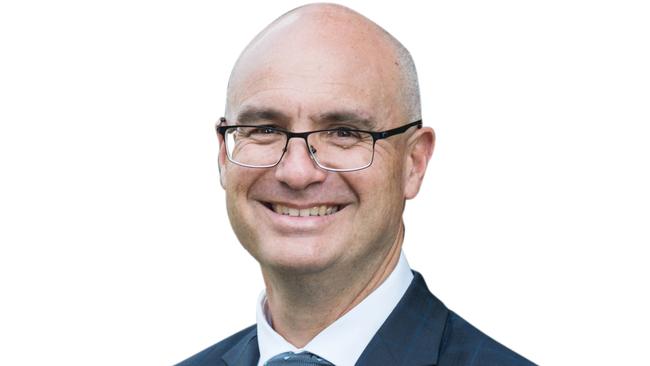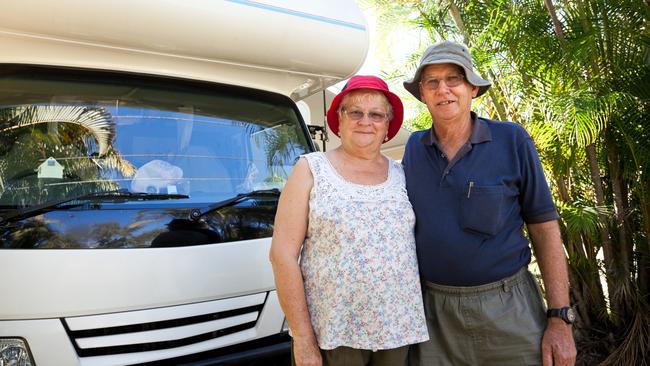Five mistakes that could significantly hit your retirement savings
Superannuation can be put at the back of your mind until it’s too late. Here’s five things you should check to make sure you are not hurting your retirement savings.
Saver HQ
Don't miss out on the headlines from Saver HQ. Followed categories will be added to My News.
SUPERANNUATION is often put on the backburner by many people who are left rushing to play catch-up as they near retirement.
Failing to pay close attention to superannuation from the get-go can end up having a significant impact on a person’s balance once they do stop work.
It’s not uncommon for people to never bother checking their superannuation accounts — some may not have any clue of their balance or even which fund(s) are holding on to their hard-earned cash.
Latest Association of Superannuation Funds of Australia statistics showed there are more than 28 million super accounts nationally and a whopping $2.8 trillion is held in super assets.
Latest Australian Taxation Office figures found in 2016-17 the average superannuation balance for a male was about $146,420.
However, for females it was significantly lower at $114,350.
MORE: The best time to buy and shares to build your wealth
MORE: Millions of superannuation accounts handed to the ATO
This is usually a result of women getting paid less and taking time out of the workforce to raise children or care for elderly parents.
But as Australians get closer to retirement, their balances do improve.
For those aged 60 to 64 the average balance in 2016-17 was $270,010 for men and $157,050 for women.
It is critical we all pay attention to our super but here are five costly mistakes you could be making that will hurt your retirement fund.

1) MULTIPLE ACCOUNTS
With more than 28 million superannuation accounts in circulation there’s a good chance you might have more than one account.
Having multiple accounts is one of the easiest ways to chew into your savings, Sunsuper’s head of product, Shane Mather, warned.
“All super funds charge fees to administer their members’ super accounts and invest their money,” he said.
“So having more than one super account means paying more than one set of fees — in most cases for no other reason than you’ve lost track of your super as you’ve changed jobs.”
Visit myGov (my.gov.au) to find a list of all your superannuation accounts and here you can also roll them into your one chosen fund and reduce how much you are shelling out in fees.
2) INVESTMENT OPTION
Superannuation funds have multiple ways to invest your money and each option comes down to how much risk you are willing to take on.
For instance, if you are not willing to take on much risk it’s likely your returns will be low — commonly known as a conservation option.
But if you are decades off retiring and ride some highs and lows you might opt for a high growth option, which invests about 85 per cent in shares and property.
This type of strategy aims for higher returns over the longer term but takes on more risk.
Mr Mather said choosing the right investment option at your various life stages was important.
“Even 1 per cent extra investment each year over your working life could substantially increase your super balance at retirement,” he said.
“If you’re in your 30s or 40s you probably won’t access your super savings for another 30 or more years so it’s a better strategy to choose an investment option that is likely to achieve strong returns over the long-term.”
You can switch investment options online or by phoning your fund. Figures from research firm SuperRatings showed for balanced funds (60 to 76 per cent growth assets), funds returned 4.8 per cent for the 12 months to May 31.
3) INSURANCE
There are many different types of insurance within your superannuation fund including coverage for death, total and permanent disability (TPD), and income protection.
Usually your super fund will provide you with death and TPD.
You can also increase, decrease or cancel your default insurance.
But be warned, from July 1 superannuation funds can cancel insurance on accounts that have not received contributions for at least 16 months.
Your fund should contact you if your insurance is about to come to an end.
Intrust Super’s chief executive officer, Brendan O’Farrell, said while insurance can be an afterthought it’s vital when you need it to make a claim.

“Ensure your insurance benefit won’t leave you short to cover debt liabilities, future living expenses, children’s education, medical bills, modifications to lifestyle resulting from injury, sickness or death,” he said.
“When your lifestyle changes, such as getting married or having a child, your insurance needs may change.
“Take the time to review and, if necessary, modify your amount of cover to meet your current personal situation.”
4) FEES
There’s so many different fees that apply to superannuation accounts including some of the following: administration, investment, advice and switching fees.
ASFA’s chief executive officer, Dr Martin Fahy, said administrative fees should range between $50 and $100 per year, per member.
And he said investment fees usually cost around 0.8 per cent of the member’s account balance.
Dr Fahy urged members to use the Australian Securities and Investments Commission’s MoneySmart superannuation calculator to see the impact that fees have on their retirement balance.
From July 1, superannuation funds have also been banned from charging customers exit fees when they switch from one fund to another.

5) CHOOSING FUNDS
Australians can hold their superannuation savings in industry, retail or corporate funds or go for the DIY option and hold a self-managed super fund account.
With more than 180 funds to choose from other than having a SMSF it can be mind boggling.
Dr Fahy said members should consider the past performance when choosing
a fund but it should not be taken as an indicator for future performance.
HOW MUCH SUPER SHOULD I HAVE AT RETIREMENT?
Comfortable lifestyle for a couple $640,000
Comfortable lifestyle for a single person $545,000
* Based on owning your home outright and being relatively healthy.
Source: ASFA.
ANNUAL BUDGET FOR RETIRING AT 65
Comfortable lifestyle for a couple $61,061
Comfortable lifestyle for a single person $43,255
Modest lifestyle for a couple $39,848
Modest lifestyle for a single person $27,646
Source: ASFA.


